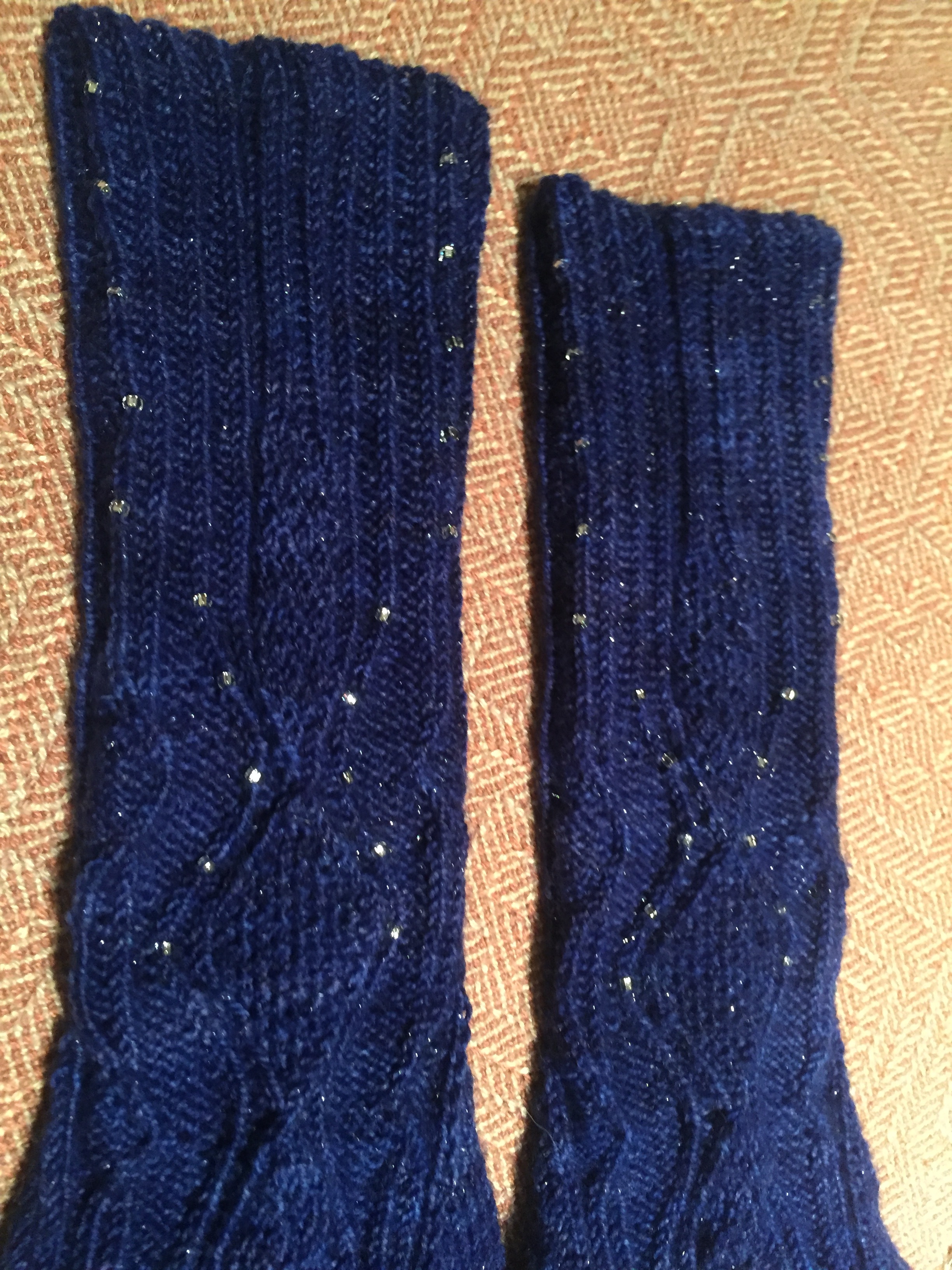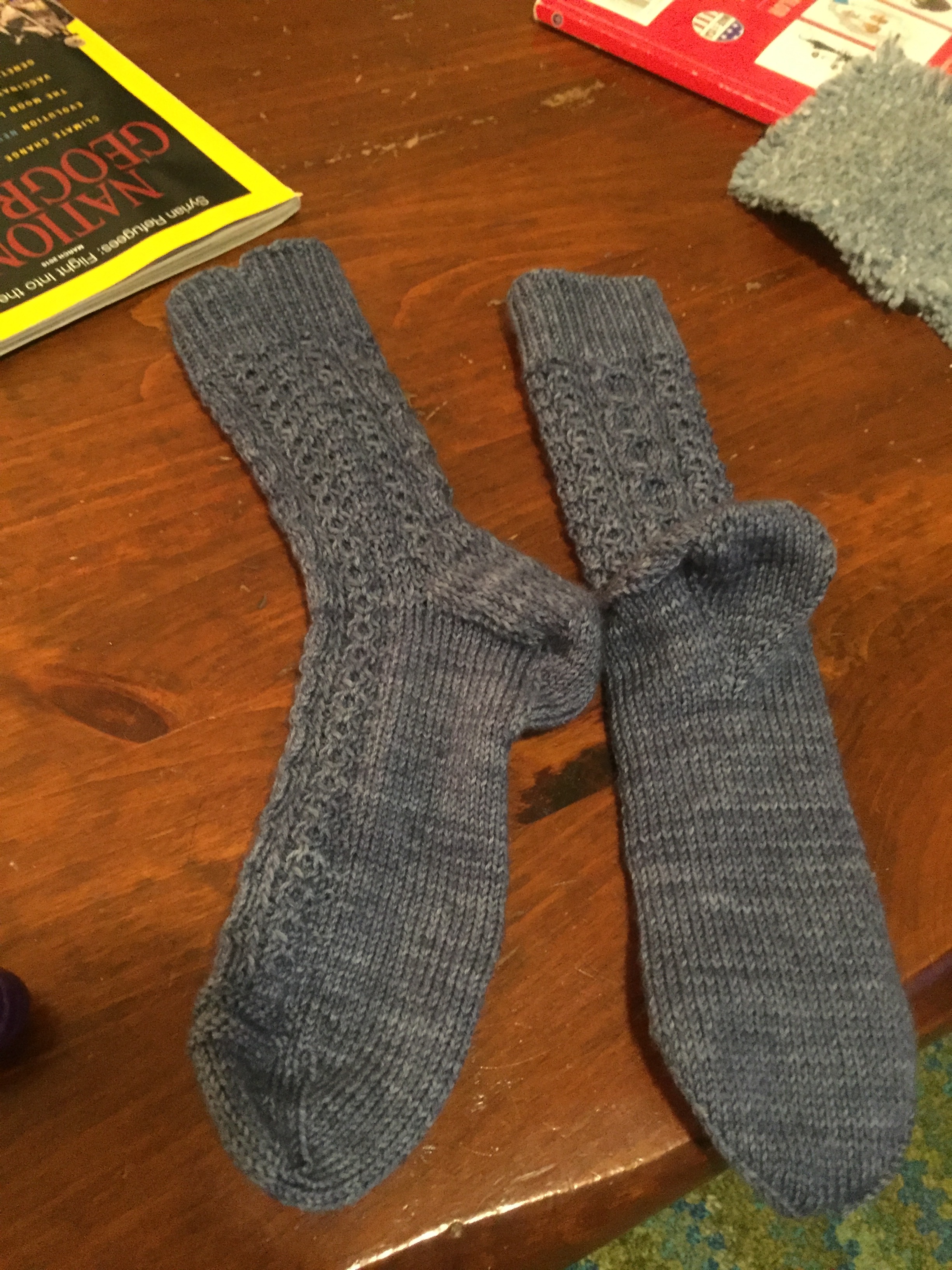The final stage! Tour de sock is now over, for this year at least.
The stage 6 socks are Sidetracked Socks by Kirsten Hall. I think they turned out well, albeit way too small for me to fit my feet in! My mom and I both independently chose the same rainbow yarn from West Yorkshire Spinners. I’ve been really happy with it for my mosaic socks, so I figured I’d use it for the last stage since it was a two color stage. When I saw the pattern I did a quick peek through the stash to see if there was anything I had that might show off the pattern better, but I decided to stick with this. The black is just a standard Opal sock yarn.
I finished stage 6 in 6th place, and I finished overall in 5th place, with 628 people knitting at least one pair of socks. I find it really interesting to think about how the scoring is done to get an overall position, in particular what it incentivizes. Each place value is awarded a certain number of predetermined points, which start at 50 points for first place and drop off quickly until you reach 5th place. At sixth place and beyond many people can get the same number of points, such that there isn’t quite as much competitiveness between the lower ranked people. Equally though, it makes it much harder for those people finishing right around 6th place to get the extra points to break into the top batch. So the scoring encourages competitiveness at the very top, and then not for everyone else, to the extent that the person who came in fourth didn’t knit stage 6 and still had more points than me (who came in 5th).
In doing tour de sock I tried lots of things I hadn’t done before, so it was definitely a learning experience. My big takeaway is playing with gusset placement after the heel. There were several different techniques I hadn’t done before that came up in TDS this year, which was a good incentive to actually try new things. I did really enjoy it, though it was certainly disruptive at times to have a pattern come out when I should have been doing something else!
































